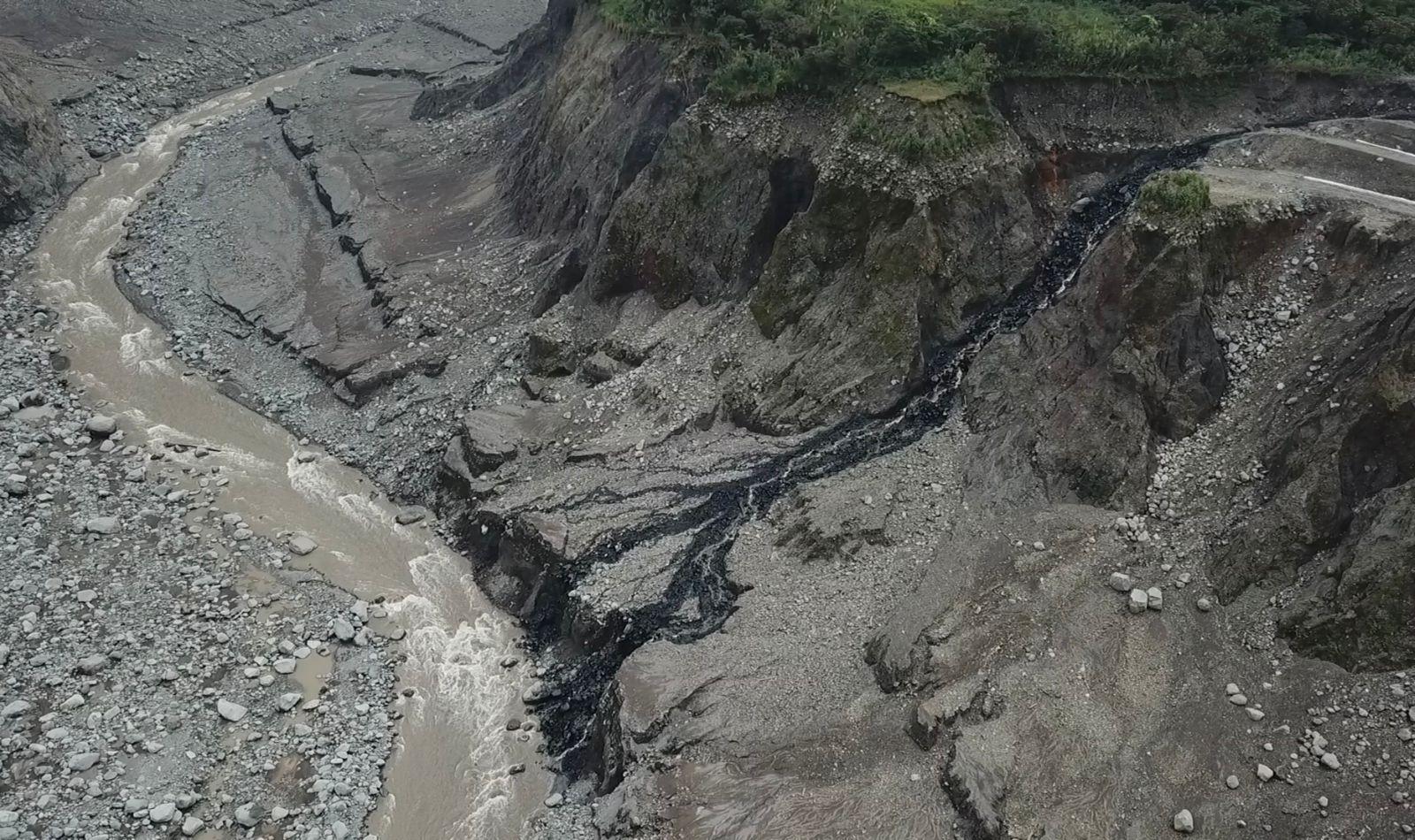‘We want justice’: Indigenous communities in peril after major oil spill in Ecuador’s Amazon
An oil pipeline ruptured in Ecuador’s Amazon region on Jan. 28, spilling thousands of barrels of oil into the jungle.
In a press release issued hours after the spill, OCP Ecuador, the private company that built and operates the pipeline, said the break was caused after a mudslide amid heavy rains. It also stated that the oil flow was under control and that the company was “taking all measures to minimize any environmental damage.”
Ecuador’s minister of energy tweeted that 100 technicians along with machinery and equipment had been sent to the spill site.
But downstream, communities who depend on the Amazon’s Coca River are seeing the impact — even hundreds of miles away. The Coca River is one of the largest and most important tributaries in Ecuador; it feeds into the Napo river, and eventually, the Amazon.
“Everything is covered in oil. The river. The surface of the water. … Decades ago, this was the cleanest river. Now it’s the most contaminated. The deadest river. It’s such a shame.”
Related: West African villagers take on an American oil giant in a new novel by Imbolo Mbue
“Everything is covered in oil. The river. The surface of the water.” said Valerio Grefa, an Indigenous Kichwa leader who lives along the Coca River, in the village of San Pablo. “Decades ago, this was the cleanest river. Now, it’s the most contaminated. The deadest river. It’s such a shame.”
Images shared widely over social media are devastating.
One man filmed as the torrent of crude spilled over an embankment in a thick, black waterfall and poured into the Coca.
“Thousands and thousands of liters of oil,” the man said. “It’s terrifying. It contaminated the Coca River. My God.”
This was the second major oil disaster in the Ecuadorian Amazon in just two years. The last, which occurred, on April 7, 2020, spilled at least 15,800 barrels into the Coca River, impacting 27,000 people across 105 communities. The same people are being hit yet again.
“These communities are in a very very serious situation, because they don’t have access to the river water, so they can’t fish there and they can’t drink from it.”
“These communities are in a very very serious situation,” said Alexandra Almeida, a biologist with the environmental group Acción Ecológica. “Because they don’t have access to the river water, so they can’t fish there and they can’t drink from it.”
Related: Ugandan farmers take on French oil giant in game changer case for multinationals
Oil contamination from spills and poor cleanup has long plagued Ecuador’s Amazonian communities. Cancer rates are higher than normal in many areas. Lawsuits have often languished in the courts. A case is currently pending in Ecuador’s Supreme Court over the 2020 oil spill.
Meanwhile, Ecuador’s President Guillermo Lasso is pushing for more oil production.
Related: Ecuador’s recent presidential election edges closer to resolution
On the campaign trail in early 2021, he said he wanted to double oil production up to a million barrels a day, in part to pay off the country’s national debt and shore up the economy. Most of that extraction would come from the oil-rich Amazon region.
Human rights groups say that plan has a cost.
“Oil’s history in Ecuador is atrocious, but so long as it happens in the Amazon, on Indigenous territories far from the city elite, it appears that the government doesn’t really seem to care.”
“The people that are suffering are the people that are living in the Amazon,” said Brian Parker, a senior attorney with Amazon Frontlines, a nongovernmental organization that works with local Indigenous groups. “Oil’s history in Ecuador is atrocious, but so long as it happens in the Amazon, on Indigenous territories far from the city elite, it appears that the government doesn’t really seem to care.”
Environmentalists say the government and the private oil companies should be taking measures to avoid oil disasters like this.
Indigenous leaders are demanding action and threatening another lawsuit if that doesn’t happen.
“We demand that the state provide environmental remediation. We want justice.”
“We demand that the state provide environmental remediation. We want justice,” said Lola Piyaguaje, vice president of CONFENIAE, the largest Indigenous organization of the Ecuadorian Amazon, during a declaration over the weekend given alongside the river.
“We are contaminated. We are bathing in dirty water. Can you imagine if we drink this water, how many of us will get sick from cancer and skin diseases?”
